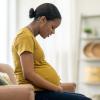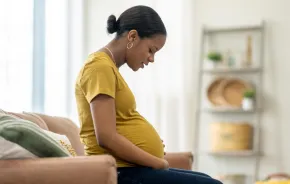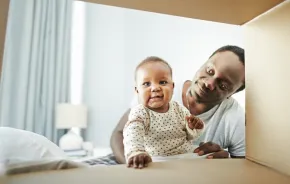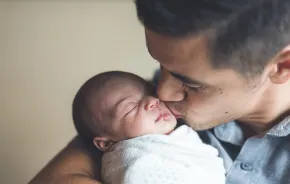
I skated through my first two pregnancies relatively free of pain: I was in my twenties, active and (mostly) well-rested. But when I got pregnant again, it was my third time in five years. I had just turned 30 and was parenting a 4-year-old and a 1-year-old.
My third pregnancy looked — and felt — nothing like the previous two.
My sciatica flared up constantly. Round ligament pain (a jabbing pain felt in the lower belly or groin area on one or both sides) struck spontaneously, doubling me over in the middle of making dinner. And an aching, burning pain in my pubic bone — which intensified after a night’s sleep or even after simply lying down on the couch for more than 30 minutes — saddled me with the classic, embarrassing pregnancy waddle.
Wondering if this was a common problem, I mentioned it to my midwife at a checkup. She smiled patiently and said, “Welcome to the wonderful world of the third pregnancy.”
Is pubic pain really more common during third pregnancies?
According to OB-GYN Christine Masterson, M.D., chief of the women and children’s service line at Summit Medical Group in New Jersey, pubic pain can happen during any pregnancy, but is definitely more common in subsequent ones; she likens the effect to that of a rubber band being stretched out over and over.
“Your body remembers what happened before,” she explains, “and that laxity can set in earlier. With every pregnancy, the give in your ligaments might happen more and sooner than the last time.”
It’s also worth noting that by the time most women reach their third pregnancies, they are older and more physically taxed than they were the first time around. When you can’t rest at the end of a long day because you have other children to care for, your body may feel the fatiguing effects of pregnancy more intensely than it did before.
That said, Masterson admits there are several factors that determine whether or not you’ll experience pubic pain during pregnancy; in theory, you could have pain with your first pregnancy but not your second or third one if you become more physically fit between pregnancies, improve the strength of your pelvic floor, or if the baby is in a different position.
Why does pubic pain happen?
Masterson says pubic pain during any pregnancy is perfectly normal and part of the body’s preparation for labor.
“In the third trimester, hormones like progesterone and relaxin increase on purpose to open up the pelvis and create more room for the baby to be delivered,” she explains.
Because your pubic bone is actually two bones joined together by cartilage, it’s something of a weak spot. When your body begins to produce those relaxing hormones, many of your joints and ligaments loosen and stretch. Masterson says that can cause stress or downward pressure on the pubic cartilage — which, in turn, causes pain.
What does pubic pain feel like?
Masterson says that most people experience pain along the lower half of their midline. It may be a tearing feeling, an ache or a burning sensation. Some women waddle, while others feel a deep sense of heaviness or pressure in their pelvis. Masterson adds that some women may even see or feel swelling in the pubic area, noticing that their clothing or underwear fits differently.
What can be done to relieve pubic pain symptoms?
Pubic pain is uncomfortable and inconvenient, but thankfully there are a number of pregnancy-safe options for relieving it. According to Masterson, you can:
- Wear good shoes with arch support
- Perform Kegel exercises or pelvic tilts to strengthen the pelvic floor
- Wear a pregnancy belt for support
- Place a pillow between your legs while sleeping
- Keep your bladder empty and your bowel movements regular
- See a chiropractor or physical therapist (with permission from your health-care provider)
- Try different sleeping or sex positions
- Avoid taking the stairs or performing other movements that exacerbate the pain
- Rest and get off your feet as much as possible
When will my pubic pain go away?
The good news for pubic pain sufferers is that most women experience relief within the first six weeks after delivery.
“By six weeks, the hormones are getting back to normal, even if you’re breastfeeding; the pressure is gone from your pelvic floor; and your posture reverts back to normal,” says Masterson.
However, if the pain persists, Masterson recommends using your six-week postpartum checkup as a time to inform your doctor that you’re not feeling 100 percent. She says there are some diagnostic tests that can be done (such as X-rays, to check for a fracture), or your provider may prescribe physical therapy to get you back on track.











